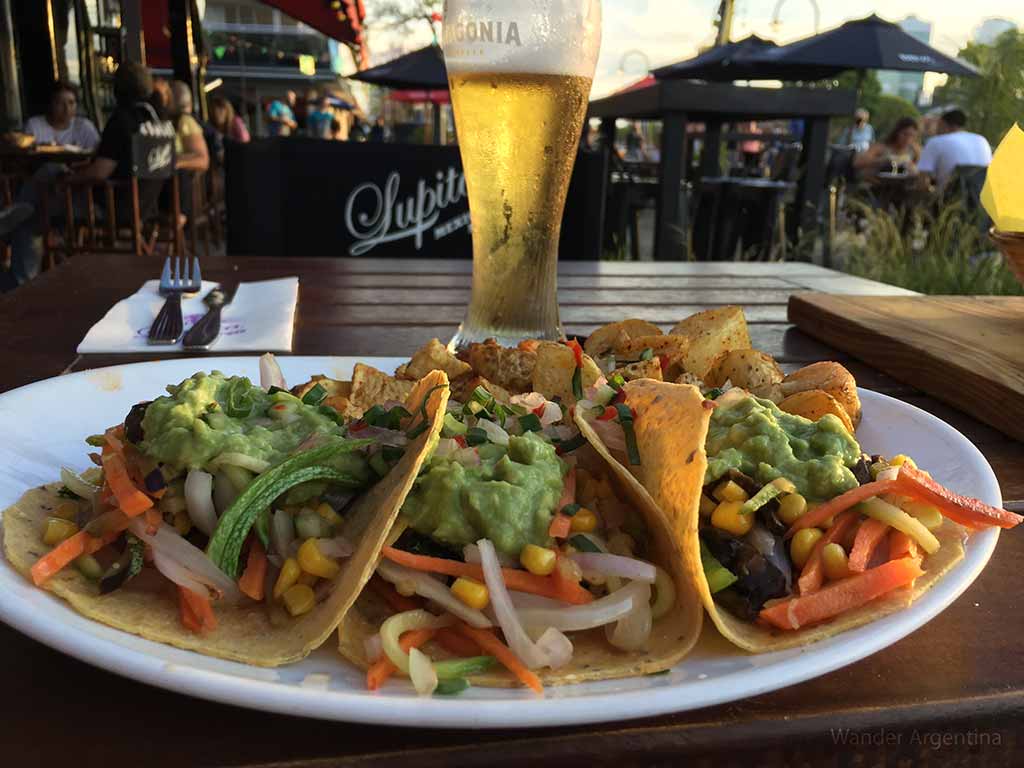Argentina may seem a bit overwhelming to a vegetarian or vegan tourist, after all its a country famous for its meat,
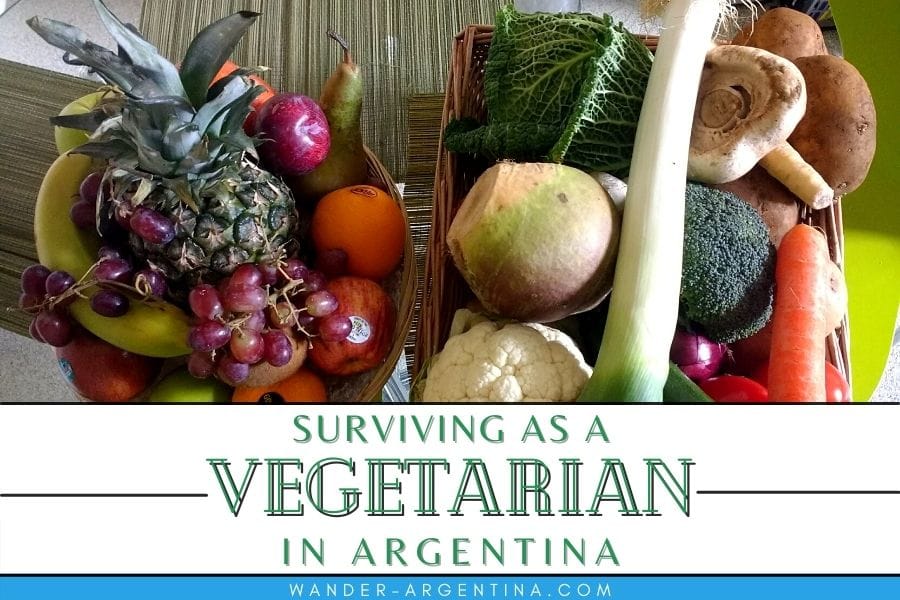
From its history of the ‘gaucho’ cowboys of the Pampas to the ‘asado‘ (Argentine barbeque), a staple of most Argentines’ diet, the country’s culture evolves around beef.
The country has the second highest meat consumption per capita in the world.
But there is a progressing movement of vegetarianism and veganism in Argentina, so maintaining a plant-based diet is possible.
Growing Shift Towards Vegetarianism in the Land of Beef
With more than four million people in Argentina who follow either a vegetarian or vegan lifestyle, more Argentine citizens themselves are favoring meat-free living.
According to a 2020 survey by the Union Vegana Argentina (UVA — Argentina Vegan Union) 12% of Argentines consider themselves vegetarians, and another 12% ‘flexitarians’ (meaning they actively reduce eating meat but will eat it when nothing else is available).
The movement is partly driven by recognition on social media and is especially prevalent among young people.
Laura Quattrini, a student from Santa Fe, believes that these days, “people are more informed about the topic, about how it impacts the animals as well as the environment”.
Manuel Martí, the President of the Unión Vegana Argentina, understands that although there is an increasing awareness and people may consciously be reducing their meat intake, the country has a long way to go before meat is cut out of diets completely — an asado is hard to resist.
In 2017 meat-free Mondays were introduced by ex-President Mauricio Macri in the Casa Rosada.
Since then, Paul McCartney, founder of the Meat-Free-Monday Foundation, wrote a letter to Argentine President Alberto Fernandez.
McCartney proposed the idea that Argentina implement the program in schools throughout the city of Buenos Aires.
The President made a lighthearted comment that he would stop eating meat only if McCartney played ‘Blackbird’ in his office at the Casa Rosada.
Vegan activists are small in number in Argentina so they try to make an impact with in-your-face education campaigns.
Their presence is prominent with militant protests and campaigns, such as that at ‘Exposicion Rural’, an agricultural and livestock show held in Palermo, Buenos Aires.
In July 2019 during a dressage contest that was part of the event, a group of more than 40 vegan activists interrupted the show with a silent protest using signs and slogans campaigning against the exploitation of animals.
The gauchos (ranchers) consequently chased them with their horses and whips until they were off the field.
Organizations in Argentina that condemn the meat industry, whether campaigning against animal cruelty, or climate effects of animal agriculture, bring to light the vast cultural divide between young urban elites and the rural traditions behind what many consider central to Argentine’s cultural identity.
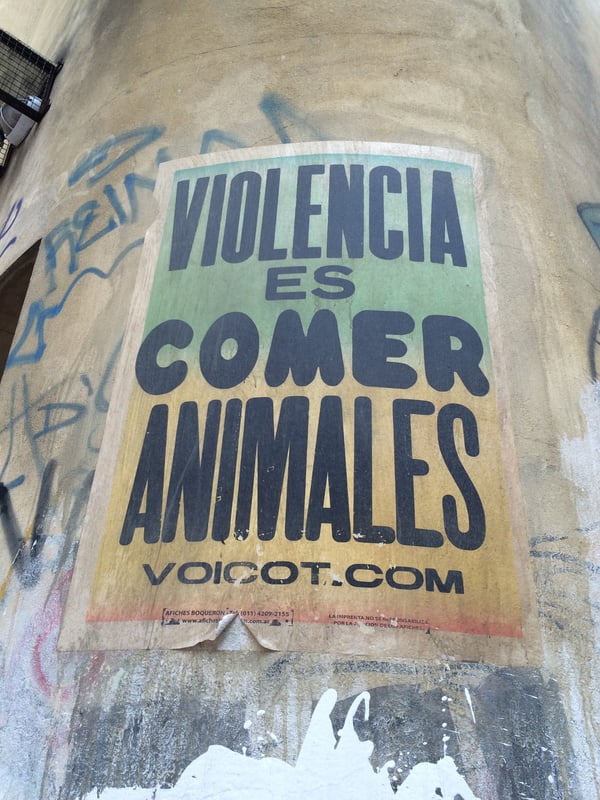
Living as a Vegetarian in Argentina
Buenos Aires has more vegetarian and vegan restaurants than ever before, given the international trend of veganism.
However, vegetarianism is still considered a fairly new concept in Argentina and the further away from the capital one ventures, the harder it is to find somewhere that caters specifically to a vegetarian diet, let alone a vegan one.
“Progressive ideas like vegetarianism aren’t as integrated further inland” says Gabriel Alí, a student from Rosario, Santa Fe.
Alí chose to be vegetarian eight years ago because of his concerns about animal welfare.
“Not only is the notion of being vegetarian or vegan not as acknowledged,” he says, “but the opportunity to find plant-based products isn’t as possible either.”
Alí says that he would like to lead a 100% vegan lifestyle and recognizes that this would be realistic were he to live in Buenos Aires.
There’s more accessibility to a bigger variety of meat substitutes and vegan ingredients in the capital, as well as many options for dining out.
Ten Vegetarian Foods in Argentina
A lot of Argentine cuisine is influenced by the nation’s Spanish and Italian roots, consisting largely of pizza, pasta, and pastry.
The good news is that these are safe vegetarian options when it comes to traveling and eating out in Argentina, as they appear on most menus in restaurants across the country.
These are the most common vegetarian options to choose in restaurants:
[Note that most of these dishes include dairy, therefore not apt for vegans.]
Empanadas – Empanadas are little savory pies that are extremely popular in Argentina. The most common vegetarian fillings are acelga y ricota (Swiss chard and ricotta), humita (sweetcorn and white sauce), caprese (tomato, mozzarella, and basil), and cebolla y queso (cheese and onion).
Pizza – Various toppings are suitable and available for vegetarians but a classic mozzarella pizza is one of the most popular choices. For those willing to put a little extra effort into seeking out a place to eat, there are restaurants in Buenos Aires that specialize in vegan pizzas and offer dairy-free cheese and gluten-free dough.
Fainá – Fainá is a type of flatbread made with chickpea flour. It is a traditional accompaniment in Argentine cuisine to pizza and is completely vegan!
Pasta – Argentines love their pasta and are proud to make and sell it fresh. The most popular dishes are ravioli, sorrentines (big ravioli), tallerines (fettuccine), ñoquis (gnocchi), and lasagne. Pasta dishes are usually either cream-based or with a tomato sauce.
Tarta – Another dish that reflects Argentina’s strong Italian heritage is tarta, which could be compared to a quiche or an English pie.
One of the most popular types is Tarta Pascualina (spinach and egg), which is traditionally eaten at Easter but is nowadays a firm favorite in many households all year round. It’s also becoming a popular healthy option in cafes, as they opt to make it with fresh vegetables and wholemeal pastry.
Tortilla de papas – Tortilla de papas is considered more of a snack in Argentina – it is found less in restaurants and more so at food stalls, like those in the San Telmo Market.
This traditional Spanish dish is nonetheless one of the classics in Argentina. Over the past few years it has become trendy to upgrade the original potato omelet – it’s not uncommon for layers of cheese or spinach to be incorporated into the recipe.
Medialunas – Medialunas are sweet croissants and are arguably the favorite and most traditional of Argentine facturas (sweet pastries). Perfect with a morning coffee or afternoon mate, these sweet treats can be found in every bakery and cafe.
Guiso de lentejas – Also known as estofado de lentejas, ‘lentil stew’ in English, guiso de lentejas is a hearty, filling stew eaten regularly in the winter months in Argentina.
Often including root vegetables like potato, butternut squash, and carrot, this comforting dish is packed with nutrients.
Milanesa de soja – Milanesa de soja, a breaded soya bean-fillet, is a vegetarian take on one of the nation’s favorite dishes. As a customary menu item, one of the most popular ways to serve milanesa is with fries and a fried egg.
Vegetarian locro – Traditional locro, which originates from the Northwest of Argentina, is a meat and corn-based stew. Some vegetarian restaurants in Buenos Aires serve a meatless version of Argentina’s national dish, mostly in the winter months.
Other meat-free dishes that are commonplace household recipes and served in some restaurants are milanesa de berenjena (breaded aubergine/eggplant fritters), buñuelos de verdura (vegetable fritters), and zapallitos or morrones rellenos (stuffed courgette or pepper).
When eating out, it may be worth double-checking that a dish is suitable for vegetarians by saying ‘Soy vegetariano/a’ (I’m vegetarian) or ‘¿Tiene carne?’ (Does it have meat?)
A word of warning though, it’s not out of the ordinary that fish and sometimes even chicken isn’t regarded as meat in Argentina, so if in doubt this phrase might be a good one to learn too:
‘No como carne ni pollo ni pescado’ (I don’t eat meat, chicken or fish.)
Top Tips for Living on a Plant-Based Diet as a Tourist in Argentina
Trying local food while dining out is one of the many things that makes traveling special.
Argentine cuisine is certainly delicious but it can also be fairly white-carb heavy, especially for vegetarians.
For those conscious about sticking to a nutritious diet, staying in self-catered accommodation provides the opportunity to do this.
It’s possible to save a bit of money too by buying local ingredients and cooking some staple veggie dishes using the accommodations’ facilities.
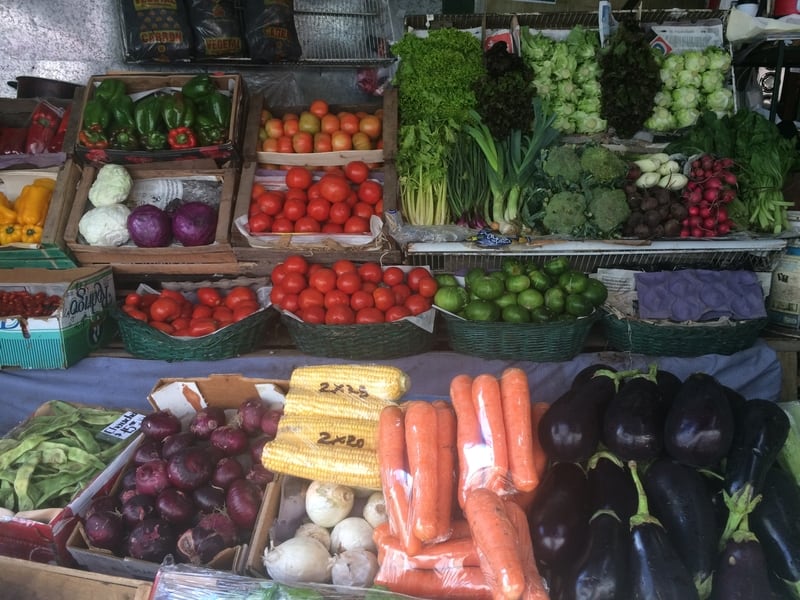
Where to Find Fresh Produce
One of the best places to start looking for food is at a verdulería (greengrocer). They are usually cheaper than supermarkets and stock fresh seasonal produce.
Take note that the custom in Argentina is to ask the grocer for the produce instead of picking it up yourself. (Pointing will do if Spanish is beginner level!)
Arguably one of the hardest aspects of being vegetarian or vegan in Argentina is the difficulty to find protein sources that aren’t meat.
Visitors can’t rely on the type of substitute tofu or seitan-based products available in other countries — they are certainly not as common in Argentina.
“I found no problem in getting good vegetarian food on the road until I started traveling in Argentina,” says Samarth Saxena, a 29-year-old IT worker from Bhopal, India.
Having now lived in Buenos Aires for two years he’s still keeping it a secret from his Hindu family that he eats meat.
“I started eating chicken and meat just one week after arriving [in Argentina]” he says, “because I was running out of options for food here.”
A good store to seek out when looking for sources of plant-based protein is health shops, known in Argentina as dieteticas.
They are fairly common and, depending on the store, supply the type of products you can’t get at many supermarkets such as seitan, non-dairy milk, quinoa, nuts and dried fruits.
Dieteticas can tend to be a bit pricey but they’re a useful place to go to stock up on healthy snacks, particularly for travelers with a long journey on the road ahead.
Dining Out as a Vegetarian in Argentina
When looking to eat out, Buenos Aires has numerous vegetarian and vegan eateries.
From quirky cafe/restaurants to vegan sushi, the possibilities are diverse.
There are dozens of international cuisine restaurants in Buenos Aires, such as Vietnamese and Indian, not to mention Asian establishments located in the Barrio Chino (Chinatown), where more exotic vegetarian food is served.
This goes for the Chinese supermarkets too, that sell less conventional products such as rice noodles and milk substitutes such as oat, coconut, or almond milk.
Beyond Buenos Aires, the accessibility to vegetarian food tends to vary throughout the country — some cities may have more meat-free options than others.
It’s easier to find vegetarian dining options in cities such as Bariloche, Puerto Madryn, and hippy havens such as El Bolsón.
In places like La Rioja, San Juan, Salta and Mendoza, travelers will find Levantine food such as falafel, lentil dishes and olives, due to Syrian and Lebanese immigrants who have settled in those regions.
Persistent vegetarian travelers might even find niños envueltos (cabbage rolls) made with mushrooms instead of meat.
Other Northwest Argentina destinations are likewise favorable places given that a plant-based diet is something prominent in Andean cultures.
The Andes produce a wealth of plant crops that originate in the region, such as corn, quinoa, and hundreds of varieties of potatoes.
Some common vegetarian dishes which use these primary ingredients are humitas (corn cakes with cheese wrapped in corn husks), and potato or quinoa-based stews and soups.
Backpacker spots, such as Purmarca and Tilcara in the province of Jujuy, northern Argentina, have several restaurants that serve plant-based dishes such as veggie tamales.
Fruit-based dessert options in the north are generally healthier too compared to the chocolate and dulce de leche laden treats found in other parts of the sweet-loving nation.
Argentine Asado: Vegetarian’s Nightmare?
Argentine barbecues are such an important part of Argentinean culture that the average Argentine citizen consumes around 50 kilos (110 pounds) of meat each year.
So what are vegetarians to do if invited to an asado?
“When I know I won’t have a food option, I always take my own, ” Laura Quattrini says. It’s a truth that many other vegetarians face when invited to an asado.
Any person lucky enough to be invited to an asado in Argentina will find that once declaring their vegetarian diet, their choice will be respected and usually catered for accordingly.
A staple vegetarian asado option is a roasted pepper with a baked egg, as well as potatoes or a side salad.
There’s always the risk of not having anything other than a menial side salad though, says Gabriel.
“Sometimes I eat what I find, which isn’t much actually, maybe just a salad.”
So we recommend bringing some vegetables to roast on the grill or perhaps a quinoa dish.
For vegans not wanting to miss out on the asado experience, there is a vegan parrilla (steakhouse) in Buenos Aires which serves vegan versions of typical asado dishes, such as seitan steak and vegan chorizo.
Vegetarian Communities
Vegetarians, and especially vegans, can get frustrated traveling in Argentina.
For a healthy veggie reset, there are yoga and meditation retreat centers such as Dhamma Sukhada and getaways such as the permaculture community, Gaia that only serve vegetarian food.
Vegetarian Food Tours
Vegetarians or don’t want to miss out on the asado experience can sign up for Buenos Aires Authentic Asado Food Tour, which has a vegetarian option available.
The Argentine Boutique Wine and Food Experience is able to accommodate vegetarian and other dietary restrictions as well.
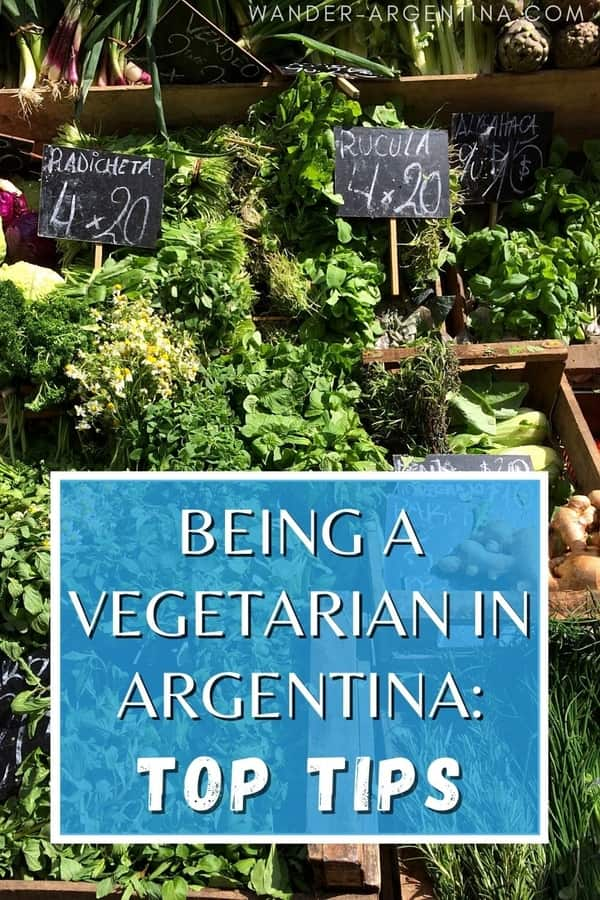
– Tilly Dale

